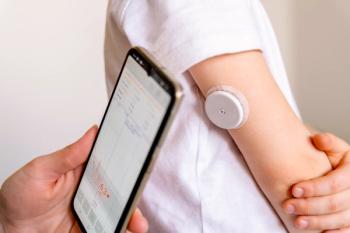
USP 800 Checklist: Priority Areas to Address
To prepare for USP Chapter , pharmacies must ensure that they are meeting the right compounding compliance standards.
To prepare for
Kevin Hansen, PharmD, MS, BCPS, who is the Assistant Director of Pharmacy at Moses H. Cone Memorial Hospital addressed priority areas that pharmacists should focus on ahead of USP <800>, which takes effect July 1, 2017.
Identify High-Risk Compounding Practices and Develop Strategies to Reduce Risks
In the presentation, Hansen noted that pharmacy staff should develop strategies to reduce risk of compounding sterile products (CSPs) in the practice setting.
This could include:
- Outsourcing high-volume CSPs to 503B facilities
- Utilizing workflow management systems
- Utilizing automation/robotics
Performing a USP <797> GAP analysis can help pharmacies determine compliance gaps, he explained.
Additionally, pharmacists should look out for “invisible errors” that could occur, including errors made in dosage, volume, preparation technique, and form of delivery. Potential strategies to mitigate these errors include barcoding, gravimetric verification, volumetric photo verification, training and continual evaluation, and labeling.
Maintain Cleanroom Environment
Hansen emphasized the importance of maintaining a cleanroom environment with strategies that involve personnel practices and design standards. Personnel should wear the proper garments and utilize the proper cleansing process to prevent contamination in the cleanroom. Hansen recommended using a physical line of demarcation to separate the “clean side” from the “dirty side.”
Personnel should also ban unsanitary items from the cleanroom, including cellphones, cosmetics, visible jewelry, artificial nails or nail polish, natural nails longer than ¼ inch, and cardboard/particle board.
Personnel should also work to eliminate touch-contamination points to prevent contamination in cleanrooms and CSPs. Reinforce proper cleansing/garbing practices with personnel by using ‘glove-boxes’ and implementing hand-free options in cleanroom spaces.
Identify Non-Compliant Cleanroom Practices
Pharmacists are urged to read their cleanroom validation report in detail and make sure that they understand the requirements needed. Hansen recommended instituting a safety walk of cleanroom spaces to identify unsanitary conditions.
Unsanitary conditions include:
- Unsealed, loose ceiling tiles
- Vermin in production areas
- Visible contamination
- Non-microbial contamination
- Improper gowning
- Failure to disinfect gloves
- Exposed wrists during aseptic manipulations
If construction or renovation is needed to improve compliance, Infection Control Risk Assessments should be utilized and cleanroom spaces should be designed to promote a clean environment while considering workflow.
Operationalize Handling Hazardous Drug Strategies
Pharmacies should implement plans to operationalize their hazardous drug assessment of risk. To improve compliance with hazardous drug handling standards, Hansen recommended the use of:
- Color coded bins
- Labels (EHR)
- Accessory labels
- ADC prompts
- EHR/MAR prompts
Pharmacists can also consider areas outside of normal dispensing process, such as operating rooms, and should create a “Hazardous Drug Safety Manual” to make available to all employees, Hansen noted.
Reference
Hansen K. Real World Experience with USP Chapters <797> and <800> Compliance Pearls. Presented at: ASHP 2017 Midyear Clinical Meeting and Exhibition. December 3-7. Orlando.
Newsletter
Stay informed on drug updates, treatment guidelines, and pharmacy practice trends—subscribe to Pharmacy Times for weekly clinical insights.




















































































































































































































